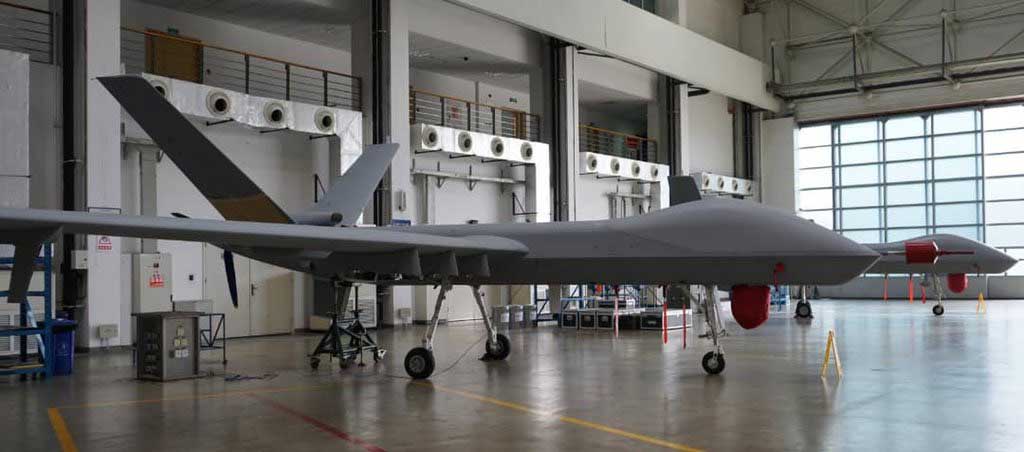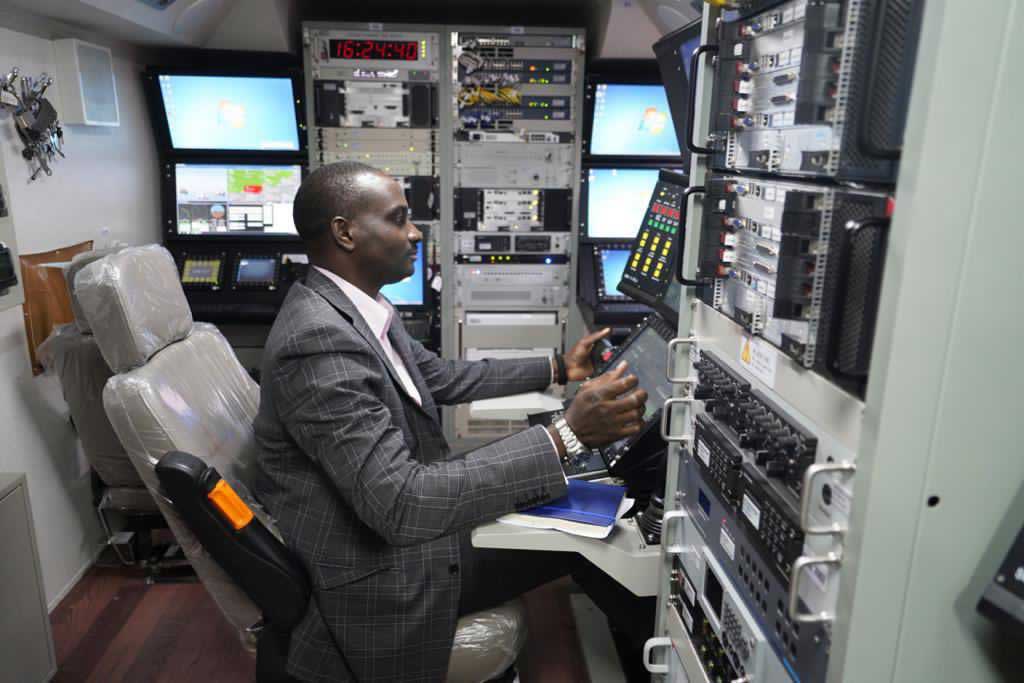Why China's armed UAVs are a global export success, and its fighter jets, not so much
China has disrupted the armed military drone market with successful sales to a number of Middle East countries, but its military fighter jet sales have stalled.
Atul Chandra
05 November 2021

Chinese military UAVs
China is now the world’s leading exporter of armed drones with a wide range of systems in series production. From 2011-2019, Chinese state-owned aerospace and defence firms exported armed drones to at least 11 different countries. Between 2009 and 2013, China exported an estimated 10 armed drone systems to two countries. But the period from 2014-2018 saw Chinese firms, backed by strong state support for arms exports, dramatically increase their armed drone sales, supplying more than 150 armed drones to 13 nations around the world. As part of its Made In China campaign, by 2025 China plans to produce 100 high-end drones annually.
Armed drone exports to the Middle East have been particularly successful with sales to Egypt, Iraq, Jordan, Saudi Arabia and the United Arab Emirates (UAE). Saudi Arabia is said to have acquired its first Cai Hong “Rainbow” 4 (CH-4) drones from China Aerospace Science and Technology Corporation (CASC) in 2014 and also inked an agreement for their local manufacture in 2017.
KSA also went on to acquire larger Wing Loong II armed drones from China's State-owned arms company Aviation Industry Corporation of China (AVIC). Other nations that have procured armed drones from China include Algeria, Pakistan, Uzbekistan, Myanmar, Turkmenistan and Nigeria, to name a few.
At the China International Aviation and Aerospace Exhibition, or Airshow China, in Zhuhai, Guangdong province in September, China joined the ranks of those countries working on "Loyal Wingman" drones, with China Aerospace Science Technology Corp's (CASTC) long-range FH-97 drone concept.The FH-97 is said to resemble the XQ-58A Valkyrie experimental stealthy unmanned combat aerial vehicle designed and built by Kratos for the United States Air Force's Low-Cost Attritable Strike Demonstrator program, under the USAF Research Laboratory’s Low-Cost Attritable Aircraft Technology (LCAAT).
Despite lacking the sophistication of high-end MALE UAVs produced by US companies, Chinese military drones have found export orders in Egypt, Saudi Arabia, the UAE, Pakistan, Nigeria, Algeria, Ethiopia, Iraq, Serbia and many other nations with less restrictive export polices than those followed by Western suppliers.
However, the performance of Chinese military drones in a highly contested battlespace teeming with fighter aircraft and air defence systems has yet to be demonstrated. During the Libyan civil war, Chinese Wing Loong UAVs supplied by the UAE , were shot down by Libyan National Army (LNA) forces loyal to General Khalifa Belqasim Hafta.
Chinese defence exports have been fueled by strong backing from the Chinese Communist Party and coupled with existing defence partnerships built on decades of exporting low-cost knockoffs of Russian military equipment have allowed Chinese firms to exploit untapped markets for military drone exports.
China also offers flexible payment terms, which makes it attractive for countries hard pressed to finance their military modernisation. Venezuela was able to use oil for partial payment towards Chinese air defence radars, transport aircraft, infantry fighting vehicles and surface ships. Thailand was able to procure armoured vehicles financed with dried food items and Uzbekistan and Turkmenistan exchanged natural gas for Chinese FD-2000 Surface to Air Missile (SAM) systems.
Chinese military UAV shortcomings to be addressed by the end of the decade
While China’s defence industry seems to have mastered the complex technologies related to Medium Altitude Long Endurance (MALE) UAVs and armed drones, it still lags behind in terms of access to state-of-the-art sensors and highly accurate precision munitions that are available to Western firms and their defence partners.
These shortcomings will likely be addressed before the end of the decade and along with China’s lead in military use of 5G communications technology and Artificial Intelligence (AI), could vault it alongside the US, Israel, Turkey and Russia in the top echelon of military drone suppliers, before the end of the decade.
The WJ-700 High Altitude Long Endurance (HALE) drone unveiled in August 2020 and the Sky Hawk, CH-7 stealth drones developed by the China Aerospace Science and Industry Corporation (CASIC) are a showcase of the rapid strides being made by China’s drone industry. The armed WJ-700 has a 3.5 tonne Maximum Take-Off Weight (MTOW) and will also be able to undertake ISR missions.
To further its drone development aspirations, the Aviation Industry Corporation of China (AVIC) has established a new subsidiary called AVIC Unmanned Aerial Vehicle Systems based in Chengdu, the capital of Southwest China's Sichuan Province.

The Wing Loong II: Cost and Specifications
The Wing Loong I, II and Caihong 4 (CH-4) drones have all garnered significant export orders. The Wing Loong II has been ordered by the UAE and Nigeria and is in service with the Peoples Liberation Army Air Force (PLAAF). Serbia signed up for nine Wing Loong drones in September 2019, while the Nigerian Air Force inducted two Wing Loong II drones in November 2020. According to various estimates the Wing Loong II costs approximately $1 million a piece, which increases to $3 million if Ground Control equipment is included. As of December 2018, AVIC had exported 100 Wing Loong I and II drones.
The Wing Loong II received substantial upgrades over its predecessor with a modernised airframe, new systems and sensors and better aerodynamics. It can remain airborne for 31 hrs for the ISR role and 26 hrs when configured for offensive missions with armament. It was the first Chinese drone to be powered by a turboprop engine and can attain a maximum speed of 370 kmph. It can carry a payload of bombs, rockets and missiles not weighing more than 480 kg. The 9 m long, 1.1 tonne Wing Loong II has a wingspan of 14m. An upgraded variant, the Wing Loong I-D with an all-composite material structure, flew for the first time in 2018.
The piston engine powered Caihong 4 (CH-4) drone is being upgraded with a heavy-fuel engine using kerosene, allowing it to operate at a higher altitude of 9,000 m as compared to 7,200 m for the gasoline-powered piston engine variant. The new engine will also reduce fuel consumption by 20% along with being cheaper to operate.
Chinese Fighter Jet Exports Stall
China’s emergence as a successful exporter of military drones is in stark contrast with exports of its military trainers and fighter jets, which have stalled in recent years. Essentially knock-offs of Soviet-era fighter designs such as the MiG-19 and MiG-21, these aircraft were often sold at throwaway prices to Pakistan, Sri Lanka, Bangladesh, Laos, Myanmar, North Korea, Kazakhstan, Uzbekistan, Turkmenistan, Nigeria and other African nations.
The Pakistan Air Force (PAF) which has operated Chinese built fighter aircraft such as the Nanchang A-5 (MiG-19 copy) and Chengdu F-7 (MiG-21 FL copy), upgraded F-7PGs and the newer JF-17 has not shown any interest in inducting the J-10 or new J-20. The PAF and PLAAF regularly exercise together, so the former is highly knowledgeable regarding the capabilities of the J-10 and J-20, but has not chosen to induct either of these types.
Two other nations that have shown interest in the J-10 are Bangladesh and Laos, but orders have not been forthcoming to date. The latest operator for the JF-17 is the Nigerian Air Force, which inducted three of the type into service in May. With fighter jet exports drying up, China is selling jet trainers to countries like Bangladesh, which received seven new Hongdu K-8W jet trainers in October 2020.